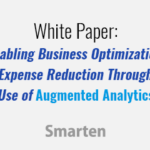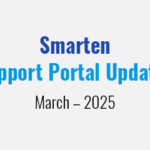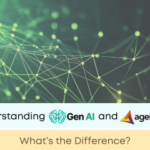How Can I Encourage Data Democratization with BI and Augmented Analytics Tools?

What is business intelligence democratization? Put simply, BI democratization is the open access to business intelligence and analytical tools to enable analysis and understanding of the data within the enterprise systems. The ‘democratization’ component relates to the ‘who.’ Who gets access to the data? The simple answer is: everyone.
‘To create an environment where business intelligence and analytics will thrive, the enterprise must encourage data democratization with the right tools and user support.’
In an environment where intelligence and information are democratized, the IT and management team set parameters to ensure the appropriate privacy and data security and provide access to information integrated from systems across the enterprise, so that each user has access to what they need and can leverage the data to provide reports, share data and make decisions in a way that is meaningful to their role.
In order to implement a BI democratization approach, the enterprise must choose flexible, scalable, intuitive tools that will enable analytics and democratization of data and encourage users to adopt and use the tools. Did you know that Gartner has predicted that while, ‘augmented analytics will be ubiquitous, only 10% of users will use it to its full potential.’ The way to assure your BI democratization and augmented analytics project is successful, is to understand what your users need to do their job and how augmented analytics solutions and features can and should support your enterprise and user needs.
In this article, we discuss a few of the components and features your team will need to consider in selecting an augmented analytics solution.

Flexible, Personalized Interface and Reporting – Select a solution that is not restrictive. Static, packaged dashboards do not allow users to use data in the ways they need for individual roles and will discourage use. Self-serve, flexible tools will encourage the transition of business users to Citizen Data Scientists and provide them with tools that encourage collaboration and data sharing and build data popularity and data literacy.
Data Preparation Tools – include self-serve data prep in your requirements so your users can perform data extraction, transformation and loading (ETL) without the assistance of IT staff. True democratization should put the power in the hands of the users, help the organization to avoid delays while waiting for data and improve productivity for users and for IT.
Predictive Analytics – Your business users should not need to seek the advice of a data scientist to forecast and predict. Tools like regression, classification, clustering, and other algorithms should be built-in to the system and allow users to easily access data and receive recommendations (assisted predictive modeling) on the best techniques to use for a particular business use case to support customer targeting, pricing, risk assessment and other questions and issues.
Data Visualization – Smart Data Visualization allows your users to build a view that will tell a story, with suggestions and recommendations to help the user decide how to present the data so that it is clear. Guided recommendations help users choose the form, e.g., tables, numbers or descriptions, and produce a report and view that will suit their needs.
Natural Language Processing – If you truly want BI democratization, you must give your users the tools they are used to having when they use technology at work or at home. A Google-type search methodology allows users to ask a simple question and returns results in natural language, so users don’t have to scroll through menus and create complex queries.
Embedded BI and Augmented Analytics – Your users already know and use many types of software solutions and apps to complete tasks. If you can embed BI within these familiar apps and solutions, your users can perform analytics and enjoy democratized data as they gather and process data within the confines of these enterprise apps, thereby avoiding the pitfalls of data silos, and improving user adoption.
‘The way to assure your BI democratization and augmented analytics project is successful, is to understand what your users need to do their job and how augmented analytics solutions and features can and should support your enterprise and user needs.’
To create an environment where business intelligence and analytics will thrive, the enterprise must encourage data democratization with the right tools and user support.
Find out how Augmented Analytics helps your business plan for success and specifically how BI democratization and Self-Serve Analytics Can Benefit your organization. Plan For Business Intelligence And Augmented Analytics and create the unique environment you and your team deserve.











